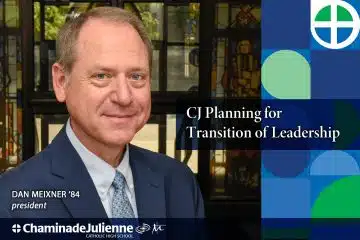8 things to know and share about the Annunciation
National Catholic Register, Apr 8, 2024 / 04:00 am
Today we celebrate the solemnity of the Annunciation. Usually it’s celebrated on March 25.
This day celebrates the appearance of the angel Gabriel to the Virgin Mary to announce the incarnation.
What’s going on and why is this day important?
Here are eight things to know and to share.
1. What does the word “Annunciation” mean?
The word is derived from the same root as the word “announce.” Gabriel is announcing the incarnation of Christ — God becoming man in the person of Jesus.
“Annunciation” is simply an old-fashioned way of saying “announcement.”
The term can be applied to other events also. For example, in his book “Jesus of Nazareth 3: The Infancy Narratives,” Pope Benedict XVI has sections on both “the annunciation of the birth of John” and “the annunciation to Mary,” because John the Baptist’s birth was also announced in advance.
2. When is the Annunciation normally celebrated and why does it sometimes move?
Normally the solemnity of the Annunciation is celebrated March 25.
This date is used because it is nine months before Christmas (Dec. 25), and it is assumed that Jesus spent the normal nine months in his mother’s womb.
However, March 25 sometimes falls during Holy Week, and the days of Holy Week have a higher liturgical rank than this solemnity.
Still, the Annunciation is an important solemnity, and so it doesn’t just vanish from the calendar. Instead, as the rubrics in the Roman Missal note:
“Whenever this solemnity occurs during Holy Week, it is transferred to the Monday after the Second Sunday of Easter.”
It is thus celebrated on the first available day after Holy Week and the Octave of Easter (which ends on the Second Sunday of Easter).
3. How does this story parallel the birth of John the Baptist?
As noted above, John the Baptist’s conception was announced in advance also. In both stories there are multiple parallels:
- The angel Gabriel makes the announcement.
- He announces to a single individual: Zechariah in John the Baptist’s case and Mary in Jesus’ case.
- He announces the miraculous conception of an individual who has a prominent place in God’s plan.
- He is met with a question in both cases (Zechariah asks how he can know this will happen; Mary asks how it will happen).
- A miraculous sign is offered as evidence (Zechariah is struck dumb; Mary is told of Elizabeth’s miraculous pregnancy, which is in its sixth month).
- Gabriel departs.
4. How is Mary’s reaction different than Zechariah’s?
At first glance, Mary’s reaction to Gabriel can appear like Zechariah’s unbelieving reaction, but it is fundamentally different.
Like Zechariah, she asks a question, but it is a question of a different sort:
- Zechariah asked how he could know what the angel says would be true. His attitude was one of skepticism.
- Mary does not ask for proof. Instead, she asks how the angel’s words will be fulfilled. She accepts what he says and wants to understand specifically how it will take place. Her attitude is thus one of faith seeking understanding, not a lack of faith.
5. What does Mary’s reaction say about her perpetual virginity?
Mary’s question is translated in the RSVCE translation of the Bible as “How shall this be, since I have no husband?”
This is not a good translation, because she does, in fact, have a husband: Joseph. Luke has already told us that she is betrothed to Joseph, which means that they were legally married (thus Joseph would have had to divorce her, not just “break the engagement” as one might today; cf Mt 1:19).
What the text literally says in Greek is “since I do not know man.”
This relies on the common biblical euphemism of “knowing” for sexual relations. Mary’s question indicates that she understands the facts of life, and it is surprising since she is legally married and awaiting the time that she and Joseph would begin to cohabit.
If she were planning on an ordinary marriage then the most natural interpretation of the angel’s statement would be that, after she and Joseph begin to cohabit, they will together conceive a child, who the angel is now telling her about.
The fact that she asks the question indicates that this is not her understanding, and it has often been taken as a sign that she was not planning on an ordinary marriage.
Early Christian writings from the second century onward, beginning with the “Protoevangelium of James,” indicate that Mary was a consecrated virgin who was entrusted to the care of Joseph.
Gabriel informs her:
“The Holy Spirit will come upon you, and the power of the Most High will overshadow you; therefore the child to be born will be called holy, the Son of God.”
Here Gabriel indicates the involvement of all three Persons of the Trinity: Through the action of the Holy Spirit, the Father causes the Son to be conceived in human form. There will be no human father, making clear the fact that the child will be the Son of God.
As a further illustration of God’s power, he points to the fact that Elizabeth, though old and apparently barren, has miraculously conceived a son and is in her sixth month of pregnancy. “For with God nothing will be impossible.”
7. Is Elizabeth Mary’s cousin?
This question sometimes comes up in discussions of Mary’s perpetual virginity, because it is sometimes thought that the “brothers” of the Lord were his cousins and that they are described as brothers because Aramaic has no word for “cousin.”
Yet the New American Bible described Elizabeth as Mary’s cousin.
Who Jesus “brothers” were has been understood in different ways. The earliest sources that comment on the question (including the second-century “Protoevangelium of James”) say that they were stepbrothers through Joseph. They also, hypothetically, could have been adopted (adoption was very common in the ancient world since people often died early). So they need not have been cousins.
While it’s true that Aramaic does not have a word for cousin, Greek does (“anepsios”), but that is not the word used here.
Despite the well-known mistranslation in the NAB (later corrected in the NABRE), Elizabeth is not described as Mary’s “cousin.” The Greek word in this passage (“sungenis”) indicates a female relative — a kinswoman — not a cousin in particular.
8. Why is Mary’s “fiat” important?
Mary’s acceptance of this role is momentous and will entail suffering. It is momentous because she will be the mother of the Son of God himself. It will entail suffering in ways that she cannot yet foresee (e.g., witnessing the Crucifixion), but some she can foresee.
In particular, she will be regarded as having been unfaithful to Joseph, and that involves not only public shame but, as Matthew records, endangering her relationship with Joseph and her future livelihood and social position. Yet she places herself completely at the service of God’s will.
Commenting on this, Pope Benedict writes:
“In one of his Advent homilies, Bernard of Clairvaux offers a stirring presentation of the drama of this moment. After the error of our first parents, the whole world was shrouded in darkness, under the dominion of death. Now God seeks to enter the world anew. He knocks at Mary’s door. He needs human freedom. The only way he can redeem man, who was created free, is by means of a free ‘yes’ to his will. In creating freedom, he made himself in a certain sense dependent upon man. His power is tied to the unenforceable ’yes’ of a human being.
“So Bernard portrays heaven and earth as it were holding its breath at this moment of the question addressed to Mary. Will she say yes? She hesitates … will her humility hold her back? Just this once — Bernard tells her — do not be humble but daring! Give us your ‘yes’! This is the crucial moment when, from her lips, from her heart, the answer comes: ‘Let it be to me according to your word.’ It is the moment of free, humble yet magnanimous obedience in which the loftiest choice of human freedom is made (‘Jesus of Nazareth 3: The Infancy Narratives,’ chapter 2).”
This article originally appeared on April 7, 2013, at the National Catholic Register and has been adapted by CNA.













